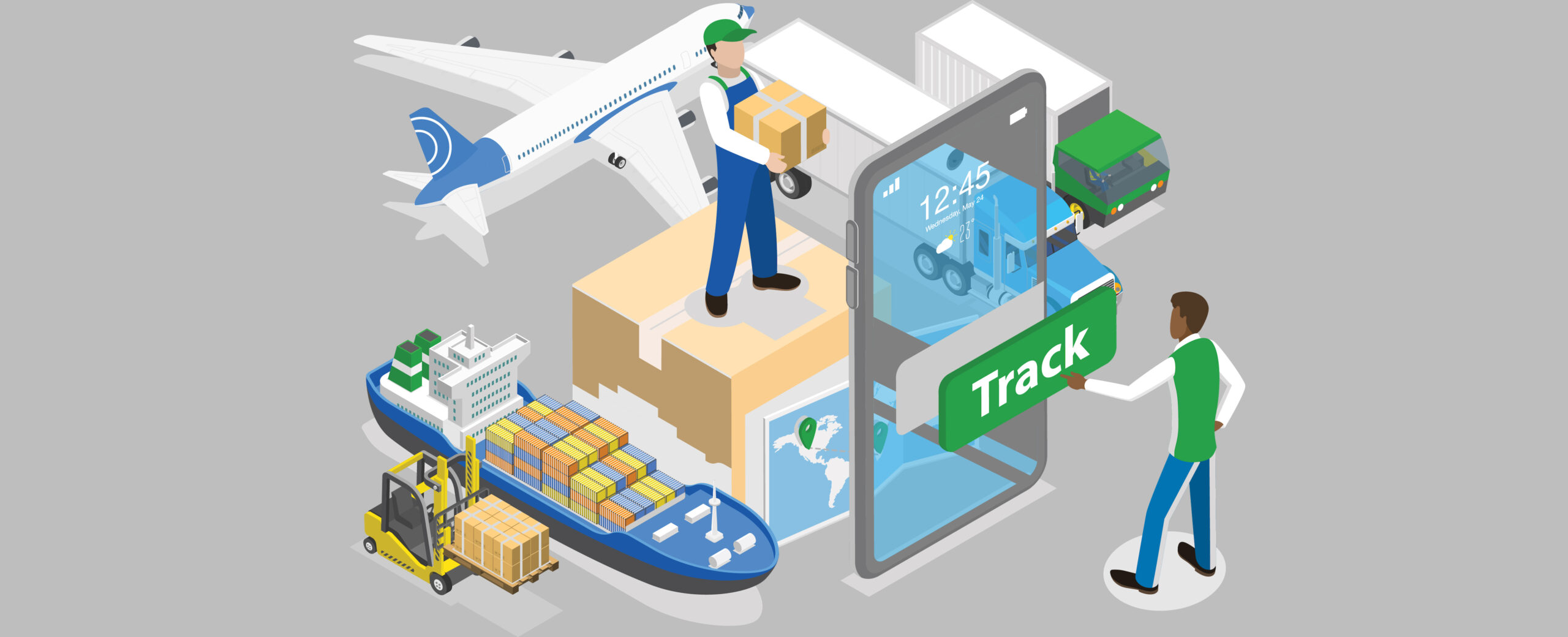Clear logistics: moving towards a fully transparent supply chain


Today, our modern-day lifestyles and consumption habits are supported by goods and services that are sourced from all over the world. Our smartphones, favourite brand of coffee and even the clothes we wear, come to life via a complex network of international supply chains.
These supply chains, while vital to driving growth and prosperity, are often so complex that all the different parts are not completely visible. This lack of visibility poses an important challenge: if a seemingly small and insignificant part does not deliver, the entire system can come to a standstill. Worst still, it’s hard to pinpoint where the problem arose.

“[The] global supply chain has resulted in better margins and cost efficiency for a product. If you look at a car, it’s composed of thousands of parts from hundreds of suppliers, across multiple countries. But in a scenario where even one of those components are disrupted, you’re talking about real operational impact on the business.
Basically, the car cannot be manufactured, and the business cannot deliver the product to the customer. So, you need to have deep visibility into the chain to spot the signs and avoid potential issues.”
Samuel Matthew
Another crucial issue stemming from this lack of visibility is that the ability for SMEs to get access to finance is hampered. The data required to complete robust risk assessments simply isn’t available. As a result, many SMEs aren’t able to participate in global trade to their full potential.

According to a 2017 study that surveyed 623 supply chain professionals across 17 countries, a mere 6 per cent of firms said they had managed to achieve full supply chain visibility. This means 94 per cent of companies lacked a centralised system that could consistently pinpoint the location of a specific item as it travels along the chain.
Looking at the 2017 survey it also shows that achieving full supply chain visibility was already a top strategic priority – its importance has only increased in the wake of Covid-19. The pandemic has exposed how obscure supply chains can prevent companies from efficiently pivoting in the aftermath of any global disruption.
“Without supply chain transparency, and [the] ability to spot early signs of problems in the chain, many companies feel like they are trying to hit a moving target while blindfolded,” said Samuel Mathew, the Managing Director & Global Head of Documentary Trade at Standard Chartered.
Poor supply chain visibility creates higher risks for companies, especially those that directly face the end-consumer – typically the large multinational companies (MNCs) with strong brand names and reputations at stake. A review of some of the recent incidences among MNCs demonstrates the repercussions that a lack of visibility in the supply chain can entail.
In the fashion world, a 2016 investigation revealed that iconic brands Marks & Spencer and ASOS had inadvertently used child labour and exploited refugees in their supply chains. Technology giant Apple has been battling criticism about its supply chain practices for years. And in the pharmaceutical industry, various companies have been warned by regulators that stricter supply chain controls are needed over the manufacturers of active pharmaceutical ingredients.
These scenarios are evidence that a lack of visibility poses a significant business risk. As Alexis Bateman, director of Massachusetts Institute of Technology (MIT)’s Sustainable Supply Chains Initiative said, a lack of supply chain transparency can now “stop businesses cold.”
Research by the World Economic Forum (WEF) also supports this. The WEF said that supply chain disruptions in the shipments industry slashed the share price of impacted companies by an average of 7 per cent.

The effects of poor supply chain visibility span far beyond individual companies. Critics of globalisation have raised important issues that need to be urgently addressed, including its potential for increasing inequality.
The reputational fallout associated with ongoing supply chain scandals thus only provides ammunition for the anti-globalisation movement, and this is exacerbated by the Covid-19 pandemic. The unfortunate part about this is it will disproportionately hurt vulnerable economies which are most dependent on SMEs, which in turn tend to be the largest employers and economic contributors.
The good news is that increasing supply chain visibility and use of new technology can help solve both issues at once. Michael Sugirin, Head of Open Account and Trade Implementation at Standard Chartered, said, “Supply chain visibility will allow companies to proactively identify risks and manage a nimbler supply chain, and it will spur more SMEs to participate in the global economy by helping them overcome a longstanding challenge – obtaining supply chain financing.”
A key barrier hindering supply chain financing for SMEs, particularly what is known as ’deep-tier‘ financing, is a lack of visibility and reach. Provision of financing requires adequate risk assessment, and such assessments can only be performed if sufficient and accurate data is available. Traditional credit risk models, which are heavily reliant on traditional ratios and standard profitability and cash flow analysis, struggle with this.
However, with innovative technology, particularly advances usage of block chain and data analytics, the problem can be solved.
Standard Chartered’s machine learning algorithms scour through mountains of external and internal data to predict supplier-performance goals better and faster. The bank can now develop financing solutions tailored to the buying and payment patterns of a corporate client as well as their buyers and sellers. The result is quicker and targeted financing solutions that allow suppliers to get funding promotes healthier and more sustainable supply chains.
Samuel Mathew said: “Today, we are increasingly able to ‘map’ the entire supply chain ecosystem of our clients and review historical performance. This allows us to provide financing based on data models which combine credit risk of the buyer and performance risk of the supplier.”
Deep-tier suppliers are not the only ones benefitting from these advances. The same data analytics capabilities that allow banks like Standard Chartered to achieve greater ecosystem visibility and justify financing to deep-tier suppliers can also help MNCs create more resilient and agile supply chains.
As Birju Sangharajka, Head, Client Coverage, CCIB, Kenya & East Africa at Standard Chartered, suggested: “MNCs should take a three-pronged approach to managing their supply chains in unpredictable climates – developing local markets and production, diversifying procurement sources, and digitisation”.
Birju’s third recommendation, digitisation, is where banks can truly add value for their MNC clients.
Digitisation bridges the gap between ’financial‘ and ’physical‘ supply chains. By bridging the gap, faster financing is possible, and the supply chain experiences less friction leading to a more efficient overall system.
Standard Chartered is financing deeper into the supply through the collaboration with Linklogis in China and is keen to bring this capability overseas. Traditional supply chain solutions only address tier one of the supply chain but the use of blockchain technology is able to democratise access to financing. “With the convergence of financial and physical supply chain, which is being accelerated by digitisation and use of data, we have the opportunity to connect to the ‘last-mile’ of suppliers”, said Michael Sugirin, Head of Open Account and Trade Implementation at Standard Chartered.

Moving toward a fully transparent supply chain has wide-ranging benefits: MNCs can build more agile supply chains, SMEs can better participate in the global economy, banks can serve more customers, and consumers can receive more ethically sourced goods. But to get there, banks must play a leading role in educating both small and large companies of the benefits of digitising their supply chains for greater visibility.